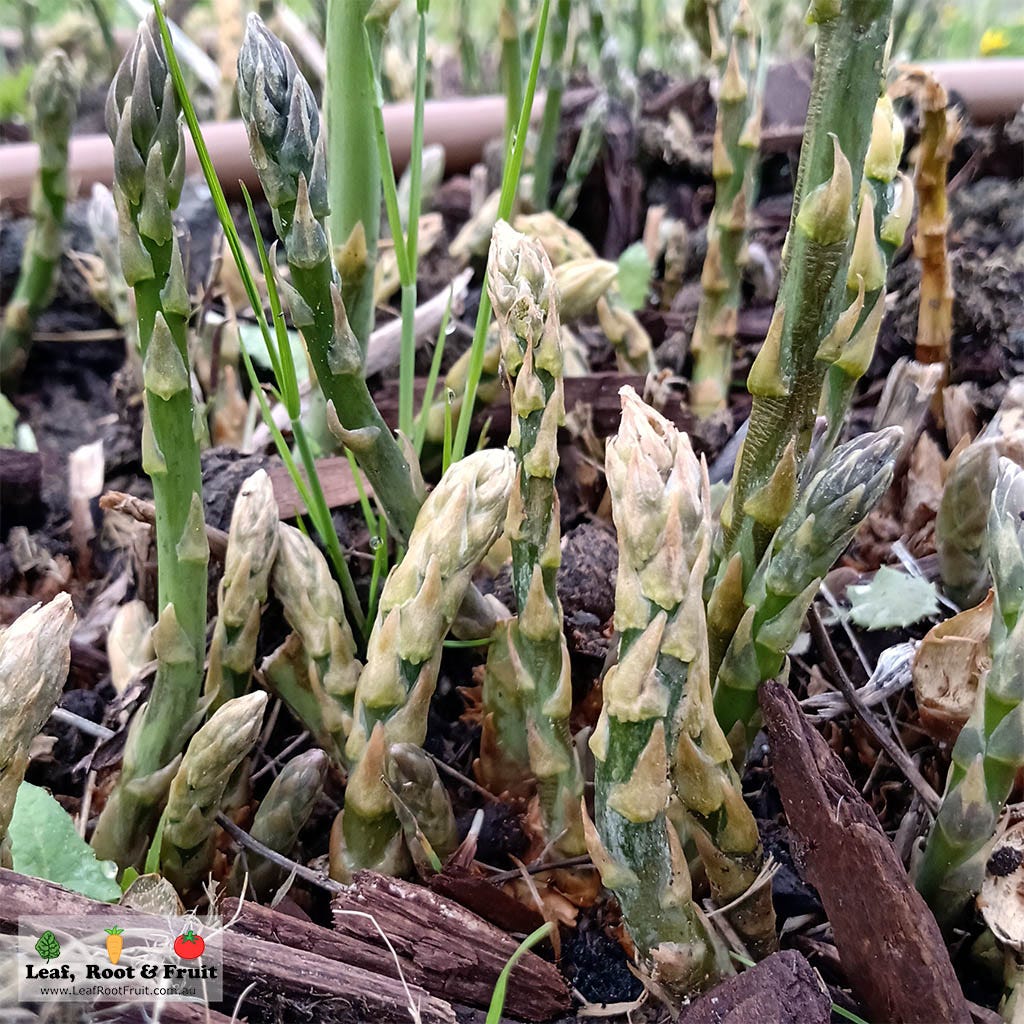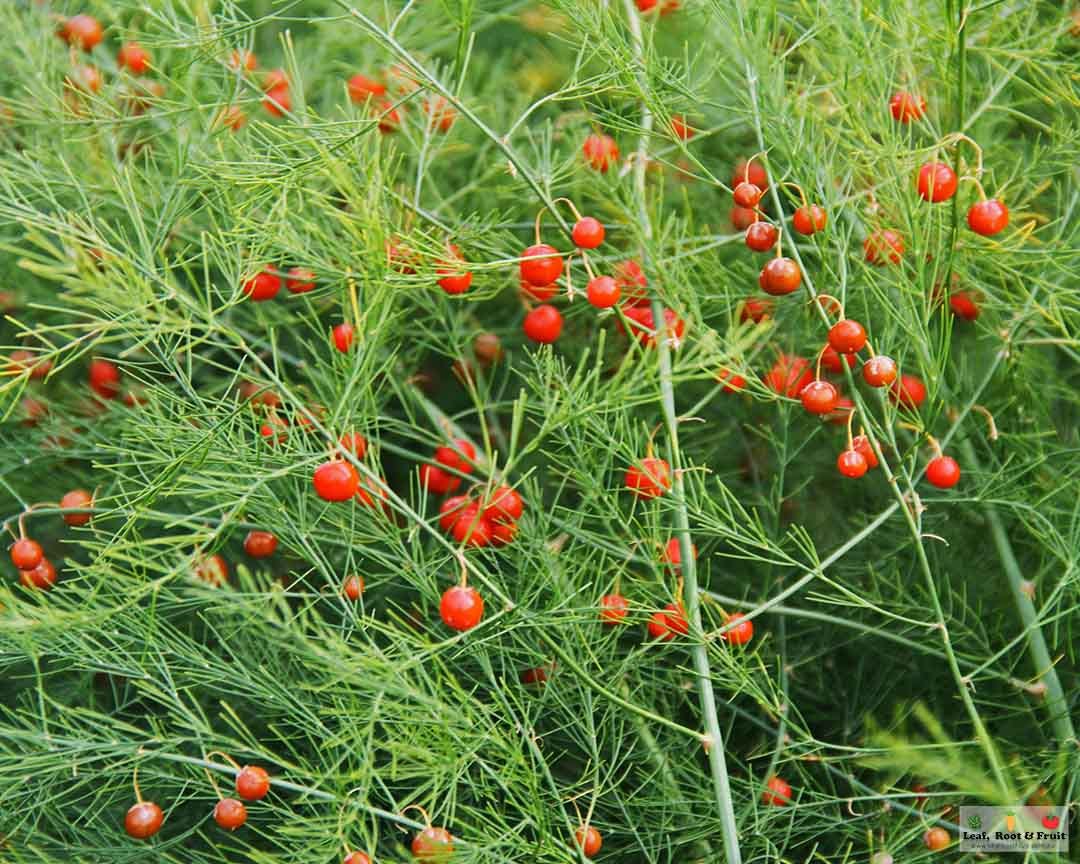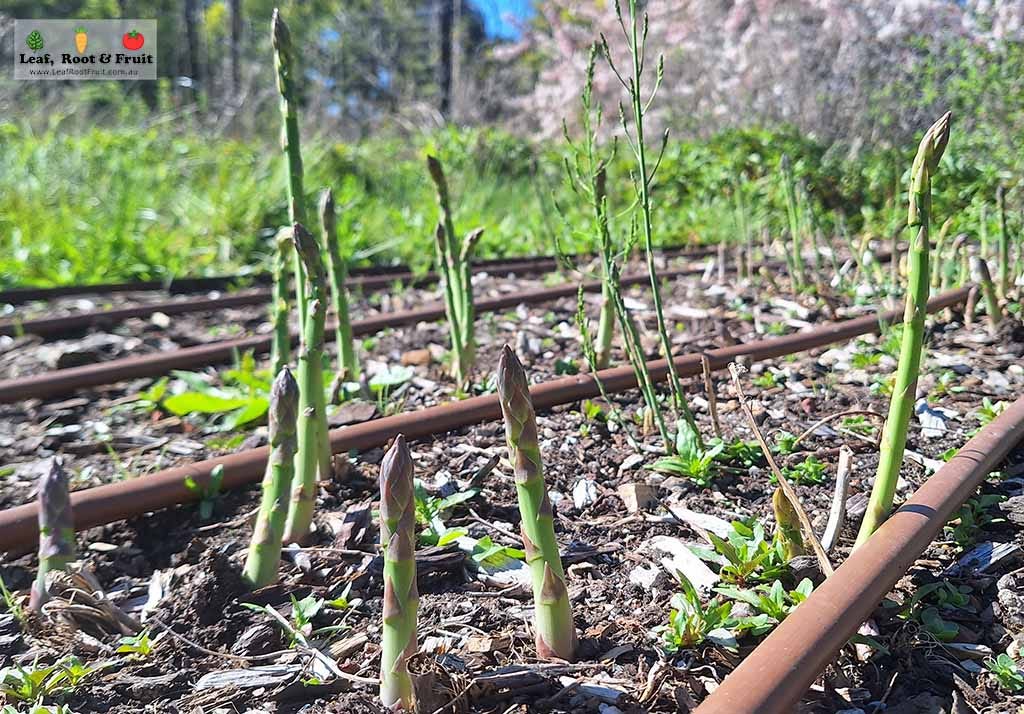This second instalment in the How to Grow series takes you through some experiments I’ve been trying in my quest to grow amazing asparagus.
One happy surprise about my tree change to Kyneton was the asparagus patch. We purchased the property and moved in winter, when asparagus is dormant. The following September, I was super excited to see huge fat asparagus spears emerge from the soil. Fresh asparagus is delicious. My children love snapping spears off and eating them raw, right there in the garden. A few asparagus crowns can lead to an abundance of spears at a time when there’s not much else being harvested. Broad beans are the other spring crop, but asparagus is so much easier to prepare than broad beans.
Asparagus is the ultimate crop for the lazy gardener
Asparagus plants are perennial, meaning they keep growing year after year. There’s no need to worry about planting seeds each year and all that palaver. Just plant them, keep them happy and pick the emerging spears.
Oh, and give them some time – growing asparagus takes time. If you’re an impatient gardener then growing asparagus is going to be a test for you. It can take several years before you start harvesting your first spears. Asparagus needs a good dose of patience.
Other than time, the plants don’t need much else. Growing asparagus is easy and very rewarding.
Common problems when growing asparagus
Established asparagus crowns are pretty much bullet proof. They don’t seem to suffer much from disease. One of your biggest problems could be planting too many of them. You’ll be harvesting handfuls of spears every few days. But the resulting glut will make you very popular with friends and family.

The best way to reduce the impact of redlegged earth mite is to keep the asparagus bed well weeded. This reduces the mites’ habitat and gives better airflow to the emerging spears.
Allowing weeds to grow can cause other problems, too. They can conceal emerging spears, meaning you don’t see them until it is too late and they become tough and woody. Weeds also allow pests such as slugs to hide and cause damage to tender young shoots.
My biggest problem with asparagus is that on my property it has become a weed itself.

The following posts in the Vegetable Patch from Scratch series will give you more information on:
Myth-busting: the inferior female asparagus
A few years ago I stumbled across a social media post mentioning that male asparagus plants produce big, fat spears and female plants tend to produce many small and thin spears. I’d never heard this but found the idea very interesting and so I delved into it.
There certainly exists a long-held belief that this is true. Amazingly, the myth is also perpetuated by commercial growers of asparagus. The theory is that because the female plants invest so much energy in growing berries, which contain seed, they don’t have as much energy to put into spear production next spring. But I like science. So I checked out some scientific papers on the topic, such as this one, this one and quite a few others.
Some research shows that male plants produce a bit earlier in the season and perhaps a greater number of spears than female plants. However, many of the studies highlighted that spear weight and overall yield was greater from female plants. Females tend to produce fatter, longer spears, which is exactly what most growers want.
The main downside of growing female plants is that they tend to create an abundance of feral plants. If these self-sown plants grow directly in your asparagus patch then it can create too much competition and lead to smaller spears.
In my personal experience, some of my best asparagus spears have come from female plants. One male plant that I have produces masses of thin, whippy spears. The kids love eating them, but they’re not ideal.
In short, I don’t think it matters and I’m not going to bother weeding the female plants out of my patch.
Planting asparagus seedlings versus transplanting crowns
Asparagus crowns can be expensive if you’re buying them from the shop. An alternative is to purchase asparagus seedlings (or grow them yourself from seeds), which will certainly help to keep the costs down.
I’ve mass planted asparagus seedlings into edible forest gardens for many clients over the years. The seedlings always take forever to get going. It will take many more years to harvest a decent crop from a seedling-grown plant than from one grown from a crown. The seedlings are also very prone to dying from snail attack and they can become swamped by weeds. If space is limited and time is short, then go straight to planting crowns in your garden.
Timing
This chart shows the best times to plant asparagus crowns based on my experience of growing these crops in Melbourne (warm temperate) and Kyneton (cool temperate), both in south-eastern Australia. The timing is applicable to growers in the same climates across the southern hemisphere. Northern hemisphere folks will need to adjust the timing by six months.
Soil preparation requirements for asparagus
Asparagus is a heavy feeder, so you will need to add plenty of compost or well-rotted manure to the soil before planting.
Having said that, I have feral asparagus plants popping up everywhere in the garden. Our native soil lacks many important nutrients, and yet some of the seedlings thrive despite utter neglect and limited rainfall over our long, hot, dry summers. The plants don’t seem to mind a bit of shade either. What does it all mean? Your asparagus will grow best in very fertile soil, but it will still grow and produce if your soil is less than ideal.
Read more about light, moderate and heavy feeders and my approach to crop rotation here.
Transplanting asparagus crowns: my experience and experimentation
The original asparagus patch that we inherited with our property is great. It is incredibly productive and produces way more asparagus than we can eat. But it is located in the “old berry patch” which is one day going to become the “new kitchen garden” as part of a big garden makeover. Given the huge lag between planting crowns and harvesting good quantities of spears I thought I’d get a head start on the new asparagus patch.
I have three raised garden beds in my orchard that are not used for much. Last year I decided to make them my new asparagus beds. In the process I thought I’d try a different approach in each of the three raised beds, and I’m seeing some interesting results already.




